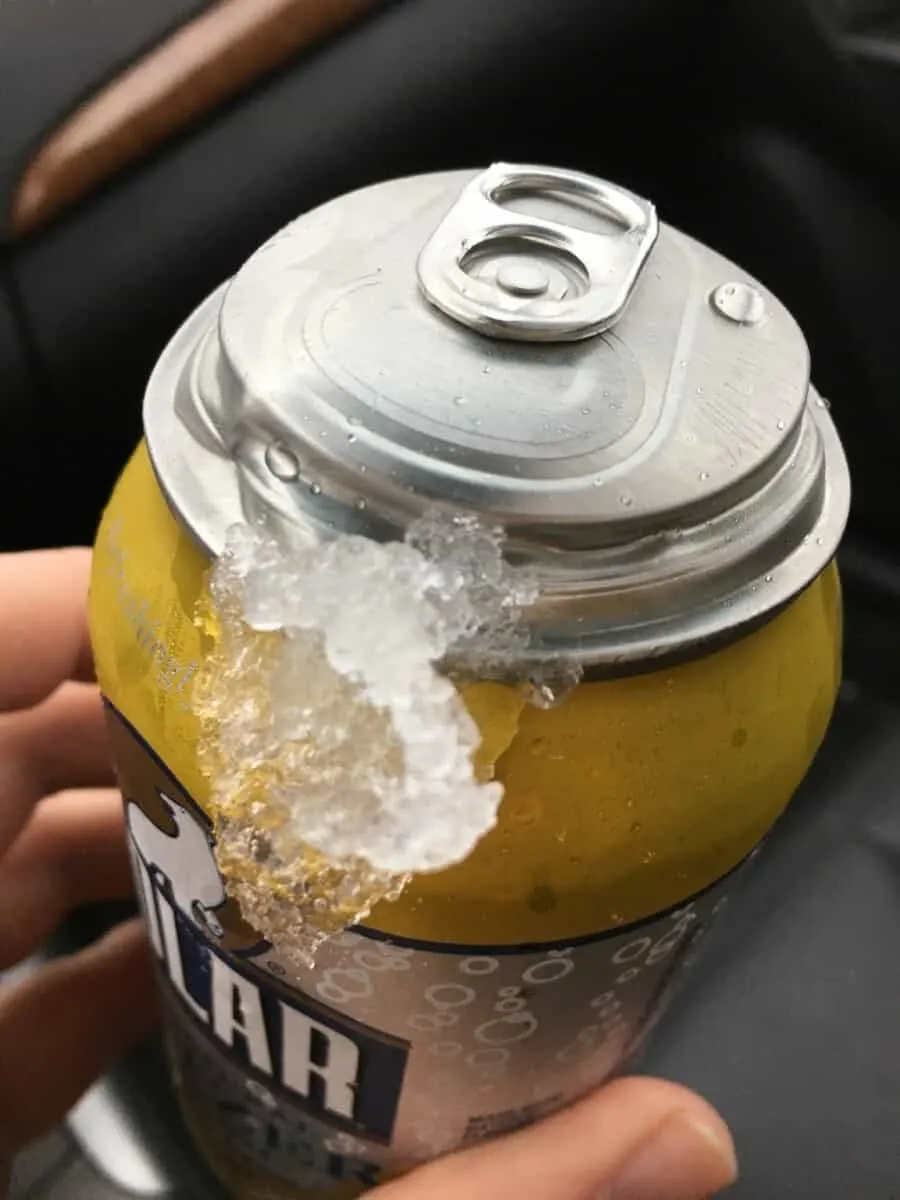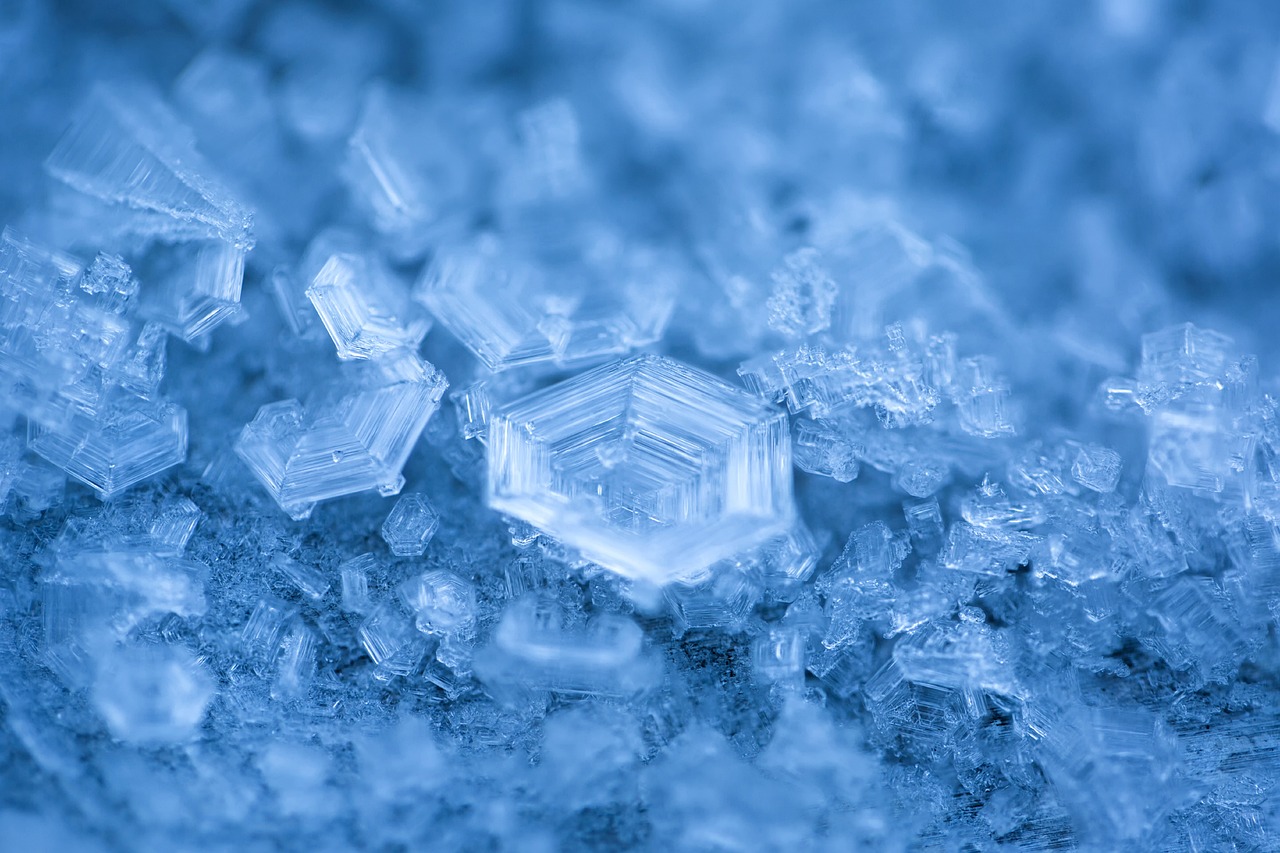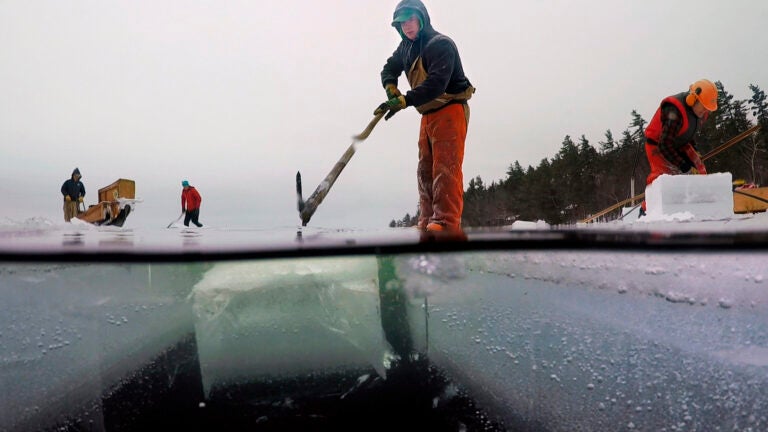Three truths everyone knows about solid ice water
- it solidifies at 0°C, and is the basis for the temperature scale
- its solid floats just above its liquid, with 90% below the surface
- it expands as it solidifies, unlike most every other substance
 |
| The water in this drink burst the can when it solidified. |
Seven things you know about water but may not have thought about
- water colder than 0°C continues to run as liquid in rivers
- ice is bendable
- ice can be clear or opaque
- salt lowers the freezing temperature, that’s why salt melts ice, but the salty oceans still form sea ice!
- the calorie and joule measures are also based on water’s properties
- ice takes the shape of its container, but 18 different shapes can be found inside that ice —most often, ice particles are shaped in hexagons
- ice can make shapes like feathers, sheets, columns, caps, bergs, balls (like hail), snowflakes, and many more!
Ten totally cool things about solid water
- ice can form straight from gas, without going through the liquid phase—snowflakes can form this way
- water can stay liquid below freezing, especially if it’s under pressure, moving, has air blown through it by a “bubbler” near boats, or even if it’s very still
- “supercooled” liquid water will freeze right before your eyes with the slightest vibration
the salt in sea ice collects in pockets that melt and drain, so the salt content of sea ice is much lower than the water it came from- ice reflects 90% of the sunlight and can give you a sunburn in winter!
- the oldest ice on Earth today (under the Antarctica ice sheet) is about one million years old! That’s about 12 500 human lifetimes, or 40 000 polar bear lifetimes!
- ice traps air when it forms, so by examining old ice, scientists can learn things about the old air and other climate details
- ice can get thick enough to drive on, and some towns way up north use ice roads to drive goods to their stores
- one of the oldest sailing clubs in Canada actually started as an ice-boating club!
- ice was harvested from lakes and rivers in winter for use all year until the late 1800s—it’s still harvested today to make sculptures
One lie about ice
Dry ice isn't ice at all. It's made from frozen carbon dioxide (that's CO2, like you breathe out), not water! And breathing in too much of it can be deadly.
Try It Yourself! Become an Ice Bender
Next time there's a thin layer of ice on a pond or lake, skim a small rock out onto the surface. Keep skimming rocks out until the weight of them starts to bend the ice down, but not break it. How much will it bend? Don't walk on that ice!by Adrienne Montgomerie




No comments:
Post a Comment